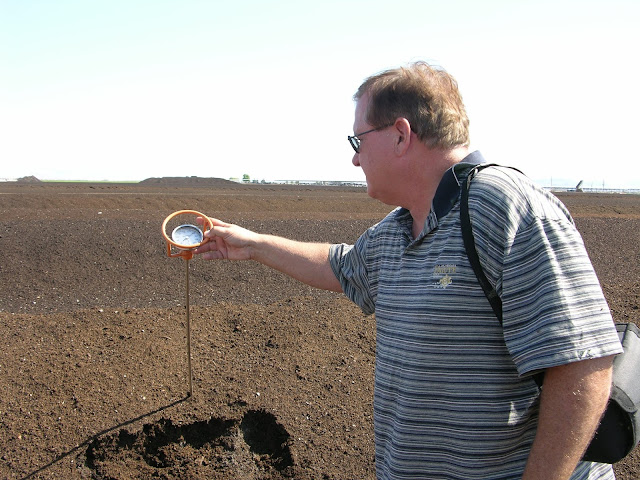Q. I discovered from the internet that soft rock phosphate apparently does not work in alkaline soil. Does our Las Vegas soil contain any phosphate? I wonder if in long term it can be unlocked with some fungi or something like that.
| Viragrow does not carry rock phosphate. 0-3-0 |
A. Rock phosphate is considered an "organic" source of phosphorus even though there is nothing "organic" about it. It comes from minerals found in the soil. This points out some of the confusion regarding the word "organic" when it comes to gardening. Many composts have phosphorus in the "organic" form including composts made from biosolids.Who knows where these "rock phosphates" come from and what they have in them that may or may not make them acceptable for "organic" gardening.
A. There is some
phosphorus in all soils. The question becomes whether there is enough
phosphorus in the soil to support what we are trying to grow.
When we grow vegetables and fruit trees in soils, these
plants take minerals from the soil and store them in their leaves, flowers and
fruit, stems and roots. We eat roots, stems, leaves and fruits of different
plants. This is how we get the minerals in our body to support our health.
When we grow plants and harvest them, we remove whatever
minerals they removed from that soil. These minerals need to be replaced in the
soil. We replace them by applying soil amendments like compost or fertilizers
or both to these soils.
Some minerals are needed in large amounts by plants while
others are needed in small amounts. Phosphorus is needed in large amounts. When
we intensively grow vegetables and fruit in a small area and harvest them,
nutrients need to be put back in the soil.
Phosphates found in
fertilizers provide enough phosphorus for most plants. Adding compost to the
soil supplies the microorganisms needed to help plants use this phosphorus. As
long as the soil is healthy and vibrant by using amendments such as good
quality compost, the type of phosphorus added will not make much difference.





-001.JPG)




.JPG)


.JPG)

-001.JPG)
.JPG)











